It’s a question that has probably puzzled many drivers at some point or another – how do you close the hood of a car? It seems like a pretty straightforward task, but for some people, it can be confusing. This blog post will provide an easy guide to closing the hood of your car. It will also explain why it’s important to know how to do this and what could happen if you don’t close the hood properly.
Bypassing a Failed Latch or Cable
Press down on the hood while engaging the interior latch.
In some cars, the exterior latch may malfunction or become damaged. It’s possible to still open the hood by pressing down on it while engaging the interior latch. This can be done by pulling on a release cable located in the passenger compartment of your vehicle.
If this method does not work for your car model, there may be another way of bypassing a failed latch or cable. Consult your owner’s manual for further information and instructions specific to your car model. It is also important to remember that bypassing the latch or cable can cause further damage if done incorrectly, so make sure you are aware of all potential risks before attempting it.
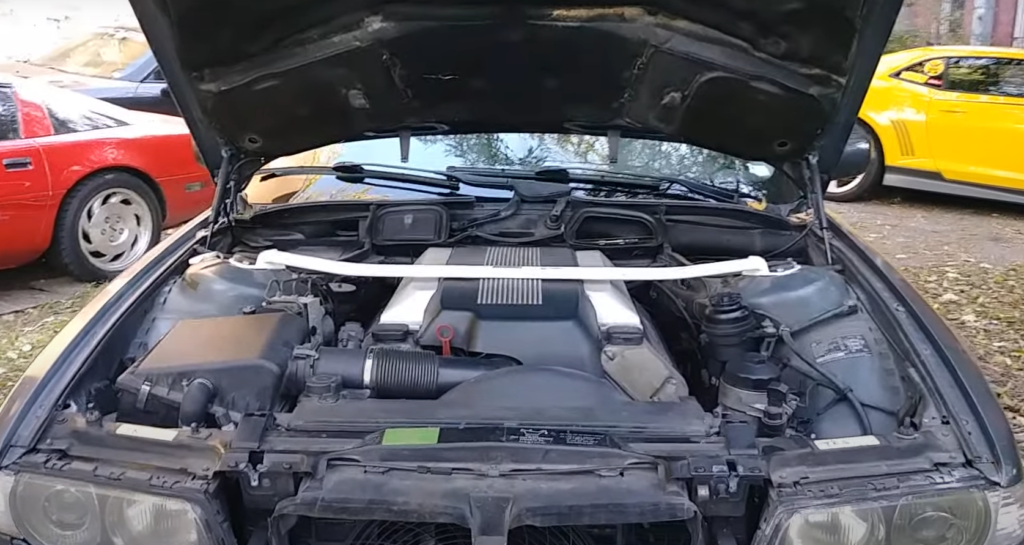
Pull on the cable from inside the car.
If your exterior latch has failed, the next step in bypassing it would be to pull on the release cable from inside the car. The cable is usually located near the passenger side of the dashboard and will have a red or yellow tab attached to it. Pulling this tab downward should cause the hood of your car to pop open. If you are having trouble locating it, consult your owner’s manual for more information on where it is located in your particular vehicle model. Additionally, some cars may require an additional release mechanism such as a lever or button which can usually be found close by.
Locate the latch through the grille.
If the latch is still not opening, you may be able to access it through the grille of your car. This can be done by removing the bolts or screws holding the grille in place and then carefully lifting it off of its hinges. Once you have access to the area behind the grille, you should be able to locate and push down on the exterior hood latch. If all else fails, contact a professional mechanic for assistance.
Check for obstructions that are preventing the latch from opening.
Before attempting any bypassing methods, it is important to make sure that no obstructions are preventing the exterior hood latch from opening. If something is blocking or interfering with its function, this could cause it to become stuck and unable to open. Check the location of the latch for any obstructions and remove anything if necessary. It may also be helpful to spray some lubricant on it to free up any stuck components.
Trip the latch with a thin tool.
If all else fails, you may be able to trip the latch by using a thin tool such as a flathead screwdriver. Insert it into the latch and gently twist it to try and release the hood of your car. Make sure that you are being careful not to damage any other components around it while doing this. If done successfully, the hood should now be open and you can go about repairing or inspecting whatever is underneath it.
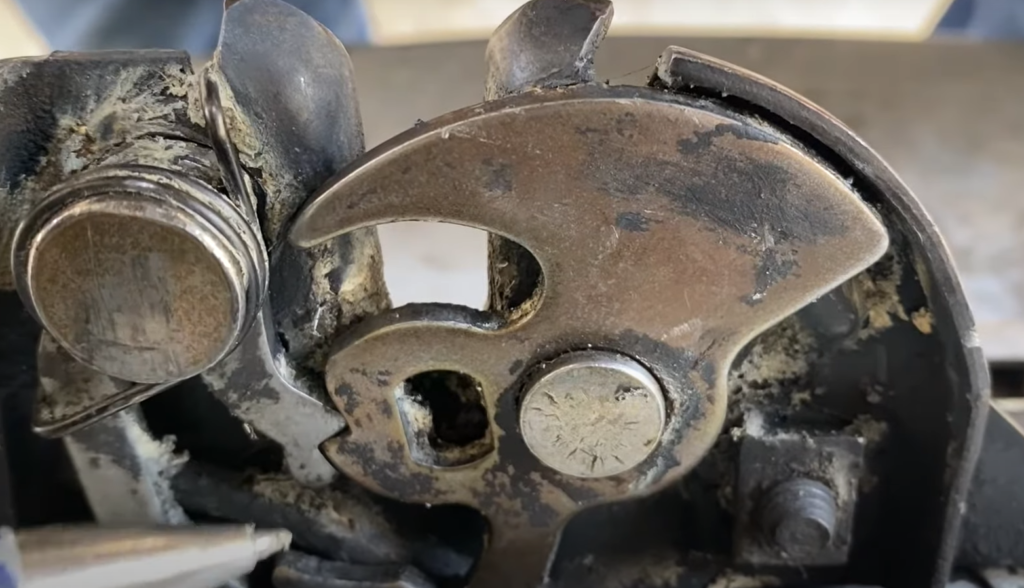
Approach it from under the hood.
If you still can’t access the latch from the inside of your car, try approaching it from under the hood. Depending on your car model and the location of the latch, this may involve removing some other components in order to get to it. Once you can locate it, gently press down on it until you hear a click which should indicate that it has been engaged.
Opening a Stuck Hood
When a hood jams, it can be very frustrating. Fortunately, there are several methods for opening a jammed hood without having to call a mechanic or buy special tools. First, check the vehicle’s owner’s manual for instructions on how to open the stuck hood from inside the car. If the manual doesn’t provide guidance, try these steps:
- Check around the outside of the hood near the latch mechanism and look for anything that may have caused it to jam, such as broken pieces of plastic or metal debris. Remove any obstructions and try opening the hood again.
- Use a long screwdriver with an angled tip to pry up and push down on either side of the latch to manually open it.
- If the latch still won’t move, use a hammer and long punch to gently tap on either side of the latch until it opens.
- If none of these methods work, carefully unbolt the hinge bolts from underneath the hood with an adjustable wrench or socket and ratchet. Once the bolts are removed, you should be able to lift up the hood by hand and access the latch mechanism from the inside.
- Be sure to re-bolt the hinges after opening the stuck hood to prevent any future accidents or damage while driving. If all else fails, don’t hesitate to take your car to a mechanic for assistance with opening a stubbornly jammed hood [1]!
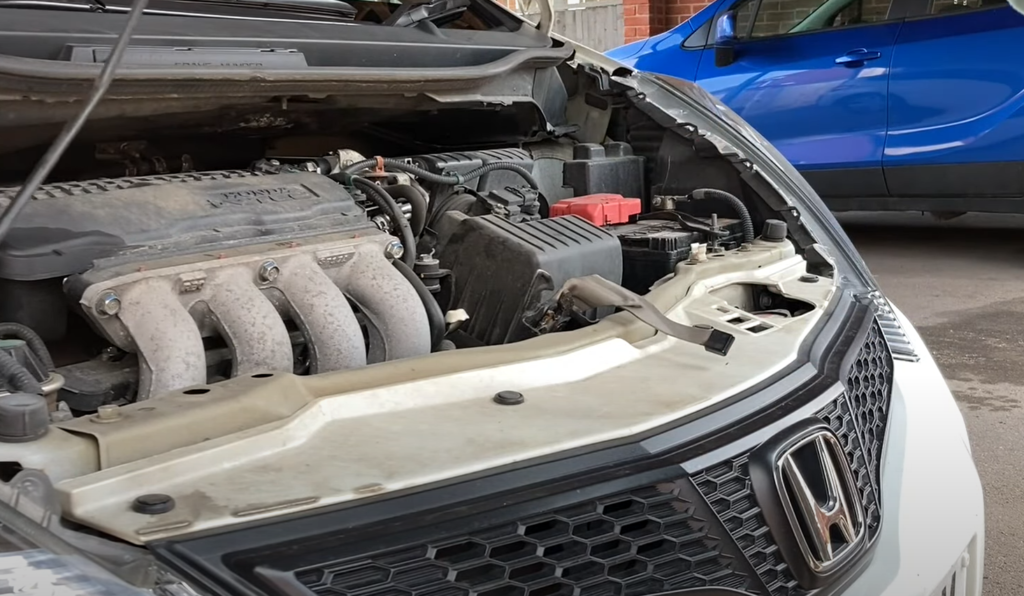
How to repair a broken hood latch?
To repair a broken hood latch, you will need to first identify the type of latch in your car. There are generally two different types; a cable-operated latch and a rod system. If you have a cable-operated latch, you will need to replace the entire cable including the clip that holds it in place at either end. To do this, first, open the hood by using another method such as an emergency release lever or special key if necessary. Disconnect the battery cables while working on any electrical components. Then remove any bolts holding the latch release mechanism in place and unplug all wiring connections before removing it completely. Replace with a new latch and reconnect all wiring connections before re-installing any bolts or clips securing the mechanism back into position. Reconnect the battery cables and test the latch to ensure it is working properly.
If you have a rod system, you will need to replace the entire mechanism, including any screws or nuts that are attaching it to the hood. Again, first, open the hood using another method such as an emergency release lever or special key if necessary. Disconnect the battery cables while working on any electrical components. Then remove all bolts or nuts holding the latch in place along with any additional clips or fasteners before removing it completely. Replace with a new latch and re-install all bolts and clips needed for securing it back into position. Reconnect the battery cables then test the latch to ensure it is working properly.
Once complete, your broken hood latch should be repaired and functioning properly. It is important to remember that working on any electrical components can be dangerous and should only be attempted by a professional. If you are unsure or do not feel comfortable completing the repair process, contact an auto repair shop for assistance. Properly repairing a broken hood latch will help keep your car safe and secure while driving [2].
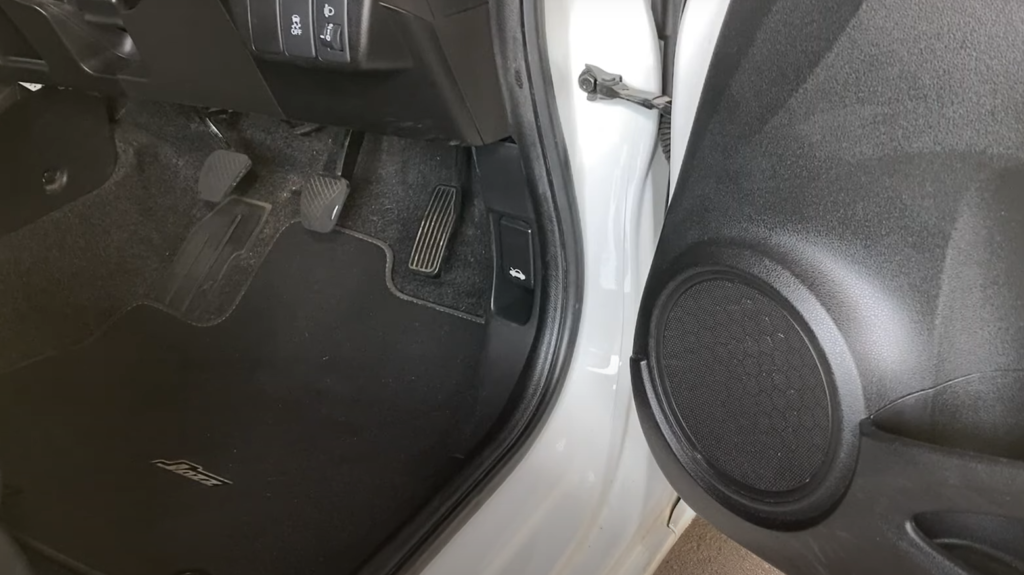
Steps on How to Change a Car Hood Latch Handle
- Begin by popping the hood open on your car to access the latch handle. It is usually located in the center of the hood and may have a different shape or size depending on your vehicle’s make and model.
- You will need to remove any screws that are holding the latch handle in place, using a screwdriver or wrench. If there are no screws visible, then you might need to use a putty knife to pry it off its mountings first.
- Take out any other components from within the hood, such as washers or clips, before attempting to remove the latch handle itself. If there are any exposed electrical wires, be sure to disconnect them properly before proceeding further.
- Have a look at the back of the latch handle and you should be able to identify the release mechanism for it. Depending on your car, this could be in the form of a metal clip or spring that needs to be released first before you can remove the latch handle completely from its mountings.
- Once you have released the latch handle from its mountings, it’s time to install your new one. Simply align it with its mounting points and secure it with screws (if necessary). It is also recommended that you apply some lubricant or grease along the edges of your new latch handle as this will help ensure smooth operation in the future.
- Reassemble all other components within the hood and give your new latch handle a few tests runs to make sure it is operating correctly. Finally, close the hood and make sure it is securely latched before you hit the road again.
With these simple steps, you can easily replace a car’s worn or broken hood latch handle in no time!
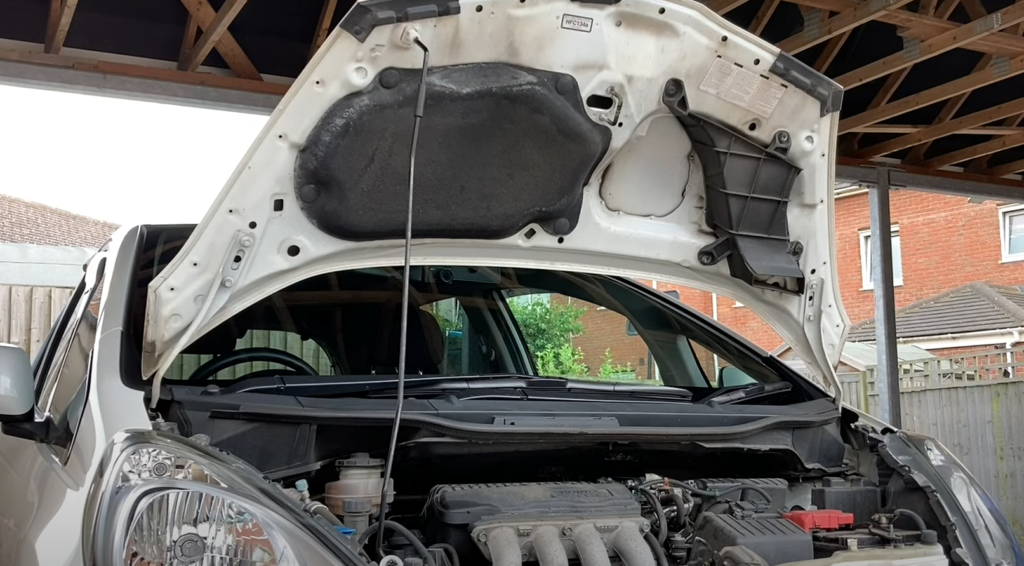
Sealing the Deal: Mastering the Art of Properly Closing Your Car’s Hood
Ensure a secure and hassle-free closure every time you shut your car’s hood. Explore the detailed table below, providing step-by-step guidance, common mistakes to avoid, and essential tips for a snug hood closure.
| Step | Procedure | Common Mistakes to Avoid | Essential Tips |
|---|---|---|---|
| 1. Positioning | Align the hood with the latch, ensuring it sits flush | Avoid slamming the hood or closing it with excessive force | Inspect for proper alignment before attempting to close |
| 2. Lowering | Gently lower the hood to engage the latch | Don’t drop the hood from a height; it may damage the latch mechanism | Lower the hood with controlled and even pressure |
| 3. Confirming Engagement | Press down on the front of the hood to confirm latch engagement | Avoid assuming the hood is secure without verifying | Listen for the click of the latch engaging |
| 4. Secondary Latch | Ensure the secondary latch engages for added security | Neglecting the secondary latch may result in hood lift while driving | Regularly lubricate the latch to prevent rust and ensure smooth operation |
| 5. Final Check | Give the hood a light shake to confirm stability | Assuming the hood is secure without a final check | Perform a final visual inspection and check after driving a short distance |
Explanation of the table:
- Positioning: Align the hood with the latch, ensuring it sits flush. Avoid slamming the hood or closing it with excessive force. Inspect for proper alignment before attempting to close.
- Lowering: Gently lower the hood to engage the latch. Don’t drop the hood from a height, as it may damage the latch mechanism. Lower the hood with controlled and even pressure.
- Confirming Engagement: Press down on the front of the hood to confirm latch engagement. Avoid assuming the hood is secure without verifying. Listen for the click of the latch engaging.
- Secondary Latch: Ensure the secondary latch engages for added security. Neglecting the secondary latch may result in hood lift while driving. Regularly lubricate the latch to prevent rust and ensure smooth operation.
- Final Check: Give the hood a light shake to confirm stability. Avoid assuming the hood is secure without a final check. Perform a final visual inspection and check after driving a short distance.
FAQ
How should you close a car hood?
When closing a car hood, you should grasp the middle of it and lower it evenly until it clicks into place. It’s important to make sure that all parts are secure before driving away. Be careful not to slam the hood down as this may damage the latch mechanism. If there is resistance when attempting to close the hood, check for any obstructions or uneven surfaces that could be preventing proper closure.
Additionally, before closing, be sure that all body panels on the vehicle are properly aligned with no gaps between them. This will also help ensure an even closure when shutting the hood. Finally, if your vehicle has a prop rod or other support device installed under the hood to keep it open while working on the engine bay, remember to replace it when you are finished.
Why can’t I close the hood of my car?
If you are having difficulty closing the hood of your car, it could be due to several issues. Check for any obstructions such as tools or clothing that may have been left in the way when attempting to close the hood. Additionally, inspect all the body panels on the vehicle for proper alignment. If there are gaps between them, this could prevent an even closure. Finally, it’s possible that the latch mechanism or some other part of the hood itself is damaged and needs repair or replacement. In this case, contact a professional automotive technician for help with resolving the issue.
How do you close the hood after popping it?
When popping the hood, grasp and lift it evenly until it is open. Once the hood is up, you can inspect any components of the engine bay that need attention. When you are finished working on the engine bay, lower the hood in a controlled manner and be sure to check for any obstructions or uneven surfaces that could prevent proper closure. Then, grab the center of the hood and lower it until it clicks into place. Finally, if your vehicle has a prop rod or other support device installed beneath the hood, remember to replace it when closing.
What should I do if my car’s hood won’t stay closed?
If your car’s hood won’t stay closed after trying to latch it shut, there could be a few causes. First, make sure that there are no obstructions or uneven surfaces preventing the hood from closing properly. Additionally, inspect the latch mechanism and make sure it is not damaged or malfunctioning. In some cases, the latch may need to be replaced if it is broken or worn out. Finally, check to see if the body panels on your vehicle are properly aligned with no gaps between them; this could also prevent an even closure when attempting to shut the hood. If these issues do not resolve the problem, contact a professional automotive technician for help with resolving it.
How to prevent car hood corrosion?
To prevent car hood corrosion, it’s important to keep the hood clean and free from moisture. Wash your car regularly with a good quality detergent or wax and make sure to rinse off any dirt or debris that may have accumulated on the hood. Additionally, inspect the underside of the hood for any cracks or other damage that could be causing water to seep into the area. Finally, apply a rust-preventive coating such as wax or paint sealer on any exposed metal surfaces on your vehicle, including the hood. This will help protect against corrosion and ensure your car looks its best for years to come.
Where is my car’s prop rod?
Most vehicles come equipped with a prop rod under the hood which is used to keep the hood open while working on the engine bay. It is usually located directly behind the latch mechanism and can be easily accessed when popping open the hood. If you cannot find your car’s prop rod, refer to your owner’s manual or contact a professional automotive technician for assistance. Finally, make sure to replace the prop rod after closing the hood so that it remains securely in place and supports the weight of the hood properly. This will help ensure a proper closure when shutting it and prevent any accidental damage from occurring.
Can I drive with a broken hood latch?
Generally speaking, it is not recommended to drive with a broken hood latch as this can lead to the hood flying open while driving and causing damage to your vehicle or even injuring yourself and other drivers. If the latch is broken, it should be repaired or replaced immediately by a professional automotive technician. Additionally, make sure that all body panels are properly aligned so that the hood closes evenly when attempting to latch it shut. This will help prevent any further damage from occurring and ensure your car remains safe on the road.
What is the proper procedure for securely closing the hood of a car?
To securely close the hood of a car, follow these steps: First, ensure that the hood is properly aligned with the latch. Lower the hood gently and allow it to latch onto the striker. Press down on the center of the hood to engage the secondary latch. Finally, give the hood a gentle upward tug to confirm that it is securely closed. Performing these steps ensures that the hood is properly sealed and prevents it from unexpectedly opening while driving.
Are there any safety precautions to take when closing the car hood?
When closing the car hood, be cautious of your fingers and hands to avoid injury. Keep your fingers away from the hood hinge area and any moving parts. Additionally, ensure that the hood is fully engaged with the latch before releasing it to prevent any misalignment or hood instability. Following proper safety precautions helps ensure a secure and injury-free closing of the car hood.
What should I do if the hood latch is not engaging properly?
If you encounter difficulty with the hood latch engaging, inspect the latch mechanism for any debris, rust, or misalignment. Clean the latch and surrounding areas, and lubricate it with a suitable lubricant if necessary. If the problem persists, consult a professional mechanic to address any underlying issues with the hood latch, ensuring proper functionality and safety.
Is it possible to damage the hood or latch if closed too forcefully?
Yes, closing the hood too forcefully can potentially cause damage to both the hood and the latch mechanism. It’s important to close the hood gently and allow it to latch securely without excessive force. Applying too much force may lead to misalignment, dents, or damage to the latch, compromising the overall integrity of the hood and its functionality.
Can I drive my car if the hood is not securely closed?
Driving with an improperly closed hood is not advisable, as it poses a safety risk. An unsecured hood can unexpectedly open while driving, obstructing your view and creating a hazard for you and other drivers. If you are unable to secure the hood properly, refrain from driving and seek immediate assistance to address the issue before continuing your journey.
Are there any signs that indicate the hood is not closed securely?
If the hood is not securely closed, you may notice vibrations, rattling, or an abnormal gap between the hood and the body of the car while driving. Additionally, if the hood warning light on the dashboard is illuminated, it may indicate that the hood is not fully latched. If you observe any of these signs, pull over safely, inspect the hood, and secure it properly before resuming your drive.
Useful Video: CAR HOOD STUCK CLOSED?
Conclusion
To close the hood of a car engine, one needs to first use the hood latch to unlock it, then open the hood and prop it up securely. Once the hood is open, all parts of the engine should be visible. One must make sure that all components are in their proper place before attempting to close the hood; any loose parts can get stuck when closing or even cause damage if not secured properly. Finally, one should slowly press down on either side of the hood until it securely closes and locks. Following these steps will ensure that your car’s engine is secure and protected from outside elements for years to come.
References
- https://www.wikihow.com/Open-the-Hood-of-a-Vehicle#Opening-a-Stuck-Hood
- https://theautosquare.com/how-to-close-hood-of-car/

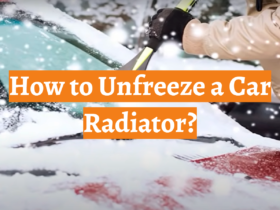



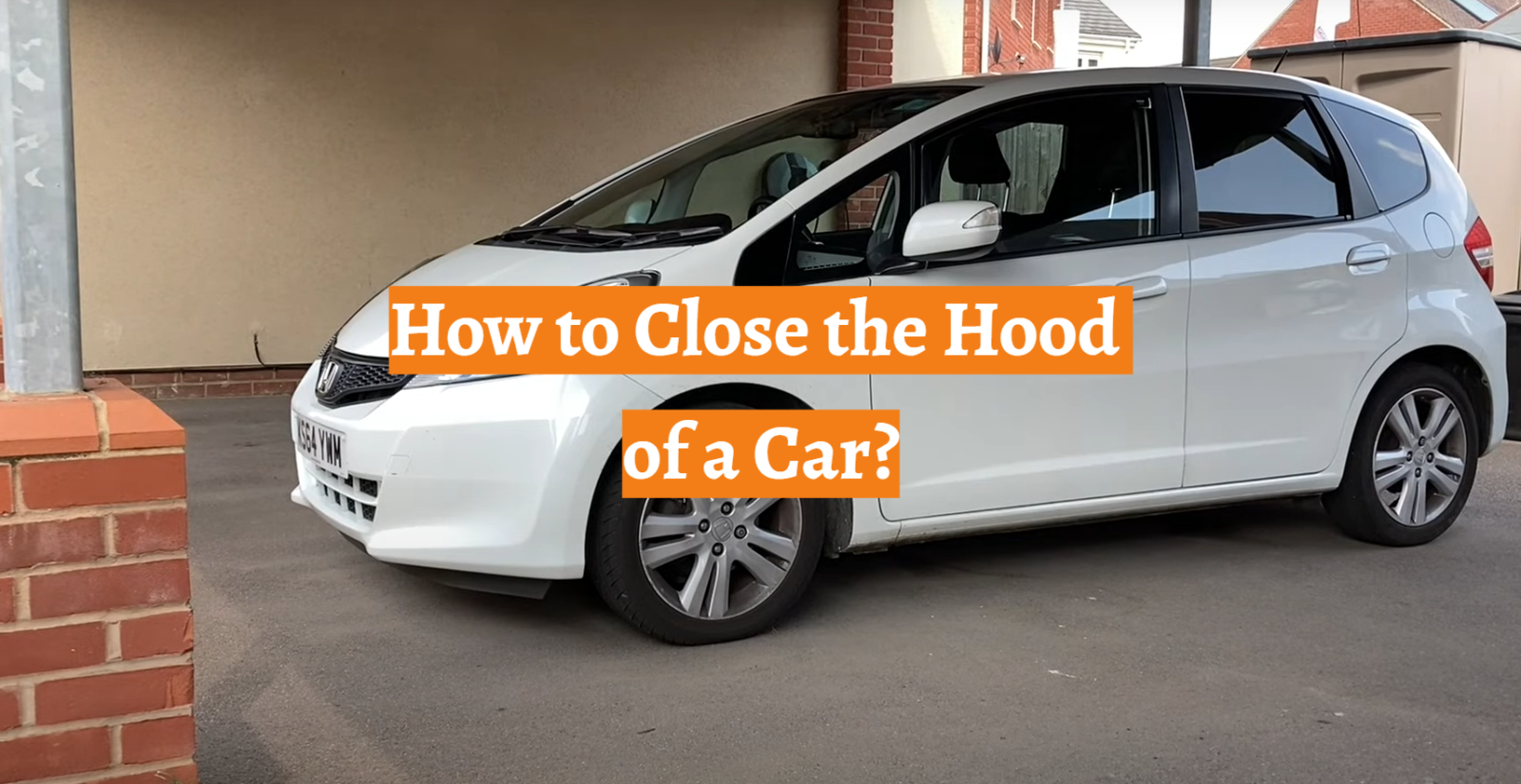



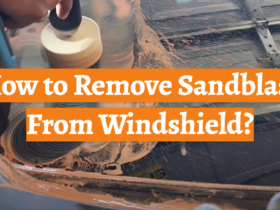
Leave a Review